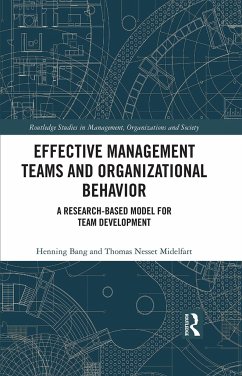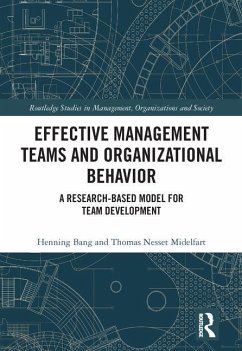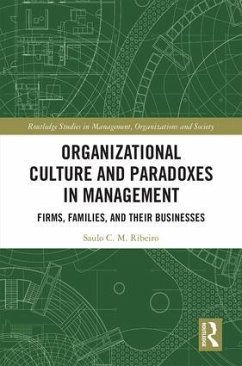High-Performance Coaching for Managers
A Step-by-Step Approach to Increase Employees' Performance and Productivity
Versandkostenfrei!
Versandfertig in 1-2 Wochen
Weitere Ausgaben:

PAYBACK Punkte
67 °P sammeln!





This book differs significantly from other books in the coaching market. Many books on coaching cast coaches as facilitators who questions their clients, helping them to articulate their own problems, formulate their own solutions, develop their own action plans to solve problems, and measure the success of efforts to implement those plans.
William J. Rothwell, Ph.D., SPHR, SHRM-SCP, CPLP Fellow is a Professor in the Masters of Professional Studies in Organization Development and Change program and also in the Ph.D. program, Organization Development emphasis, of Workforce Education and Development at The Pennsylvania State University. He can be contacted by email at wjr9@psu.edu. He has authored, coauthored, edited or coedited 110 books since 1987. His recent books include Innovation Leadership (Routledge, 2018), Improving Human Performance, 3rd ed. (Routledge, 2018), Evaluating Organization Development: How to Ensure and Sustain the Successful Transformation (CRC Press, 2017), Marketing Organization Development Consulting: A How-To Guide for OD Consultants (CRC Press, 2017), Assessment and Diagnosis for Organization Development: Powerful Tools and Perspectives for the OD practitioner (CRC Press, 2017). Behnam Bakhshandeh is an accomplished business manager, known widely as a dynamic writer, speaker, personal and business coach and trainer. Implementing his skills as a passionate, visionary leader, he produces extraordinary results in record time. Behnam brings his broad experience and successful track record to each project, whether it involves personal development, implementing customer-focused programs, integrating technologies, marketing, redesigning operational core processes, or delivering strategic initiatives. Before designing Primeco Education technology, Behnam led educational programs and later managed operations for a global education organization based in two major US cities. During this seven-year period, Behnam worked personally with tens of thousands of participants. He was accountable for expanding customer participation, training program leaders, increasing sales, and improving the finance department's efficiency and management of the overall operations for the staff and their team of over 400 volunteers, who together served an annual client base of over 10,000. Behnam designed the Primeco Education technology in 2001. Since then, he and his team members have helped countless businesses and individuals not only achieve their goals, but also transform their thinking. His proven methodology is based on his extensive experience in business and human relations. He consistently delivers and works with others to produce results beyond what was predicted or expected. This exceptional rate of business and personal growth is the result of his high integrity, unprecedented teamwork, open communication, and a contagious, unflinching commitment to excellence in all business operations, personal relationships, and professional interactions. Behnam is a shining example of how combining vision and goals with hard work consistently pays off beyond even the highest expectations. His work with businesses has resulted in successful team building, companies that grow through a shared vision, efficient process redevelopment, increased revenues, and work environments that support employee satisfaction and retention.
Produktdetails
- Verlag: Productivity Press
- Seitenzahl: 562
- Erscheinungstermin: 5. Juli 2022
- Englisch
- Abmessung: 260mm x 183mm x 35mm
- Gewicht: 1239g
- ISBN-13: 9780367740603
- ISBN-10: 0367740605
- Artikelnr.: 63197654
Herstellerkennzeichnung
Libri GmbH
Europaallee 1
36244 Bad Hersfeld
gpsr@libri.de
"In a world that has become increasingly complex, organizations are looking to their managers to set higher standards of performance for their employees. William Rothwell and Behnam Bakhshandeh do a stellar job of explaining how to do this through performance coaching by describing what it is and how it can be used to achieve results. This book provides practical and research-based guidance on coaching employees regarding what they should do, how they should behave, and how best to measure success. This will be a great resource to any organization attempting to increase overall productivity and performance on the job".
-- Marsha G. King, PhD, Director, Leadership Coaching Certification Program; Center for Leadership and
-- Marsha G. King, PhD, Director, Leadership Coaching Certification Program; Center for Leadership and
Mehr anzeigen
Organization Effectiveness; School of Management, University at Buffalo
"In today's world, there has been an unprecedented influx and demand for coaching, where self-proclaimed professional and personal coaches can be found in every other corner. Even without an official title most managers and leaders, need to play the role of coach to fully unleash their people's performance and potential. Whatever your role may be, many coaches lack a structured approach and practical tools to deliver effective coaching. High-Performance Coaching for Managers gives managers and coaches alike a unique practical step by step paradigm to unleashing high performance from their employees and is a must read for anyone looking to take their coaching to new heights."
-- Rani Salman, Managing Partner at Caliber Consulting
"I am excited for this book to be published and to be shared with the full spectrum of managers, clients, and talent development professionals. Rothwell and Bakhshandeh focus on a very specific use of performance coaching, and I believe the profession will benefit and come to understand a facet of coaching in a much more concrete way".
-- Ethan S. Sanders, President and CEO, Sundial Learning Systems, Inc.
"If you think of someone you've worked with or for that you consider to be a great leader, they were also likely a great coach. Great leaders are great coaches. High-Performance Coaching for Managers provides a comprehensive and practical approach to building a culture of coaching in order to unleash the full potential of today's workforce."
-- Steve King, VP, Chief Learning & Talent Officer, Rich Products Corporation
"As a person who operates in the various states of coaching outlined in this book, I found each chapter insightful and intuitive. The text will serve as an excellent fundamental foundation for new and experienced coaches. Rothwell and Bakhshandeh have provided a roadmap for those walking on the coaching path!"
-- Jamie Campbell, Assistant Dean, Diversity Enhancement Programs, Smeal College of Business: CEO, Action for Racial Equity Fellow
"In today's world, there has been an unprecedented influx and demand for coaching, where self-proclaimed professional and personal coaches can be found in every other corner. Even without an official title most managers and leaders, need to play the role of coach to fully unleash their people's performance and potential. Whatever your role may be, many coaches lack a structured approach and practical tools to deliver effective coaching. High-Performance Coaching for Managers gives managers and coaches alike a unique practical step by step paradigm to unleashing high performance from their employees and is a must read for anyone looking to take their coaching to new heights."
-- Rani Salman, Managing Partner at Caliber Consulting
"I am excited for this book to be published and to be shared with the full spectrum of managers, clients, and talent development professionals. Rothwell and Bakhshandeh focus on a very specific use of performance coaching, and I believe the profession will benefit and come to understand a facet of coaching in a much more concrete way".
-- Ethan S. Sanders, President and CEO, Sundial Learning Systems, Inc.
"If you think of someone you've worked with or for that you consider to be a great leader, they were also likely a great coach. Great leaders are great coaches. High-Performance Coaching for Managers provides a comprehensive and practical approach to building a culture of coaching in order to unleash the full potential of today's workforce."
-- Steve King, VP, Chief Learning & Talent Officer, Rich Products Corporation
"As a person who operates in the various states of coaching outlined in this book, I found each chapter insightful and intuitive. The text will serve as an excellent fundamental foundation for new and experienced coaches. Rothwell and Bakhshandeh have provided a roadmap for those walking on the coaching path!"
-- Jamie Campbell, Assistant Dean, Diversity Enhancement Programs, Smeal College of Business: CEO, Action for Racial Equity Fellow
Schließen
Für dieses Produkt wurde noch keine Bewertung abgegeben. Wir würden uns sehr freuen, wenn du die erste Bewertung schreibst!
Eine Bewertung schreiben
Eine Bewertung schreiben
Andere Kunden interessierten sich für













